Distillers mushroom across the country, producing spirit with a local twist
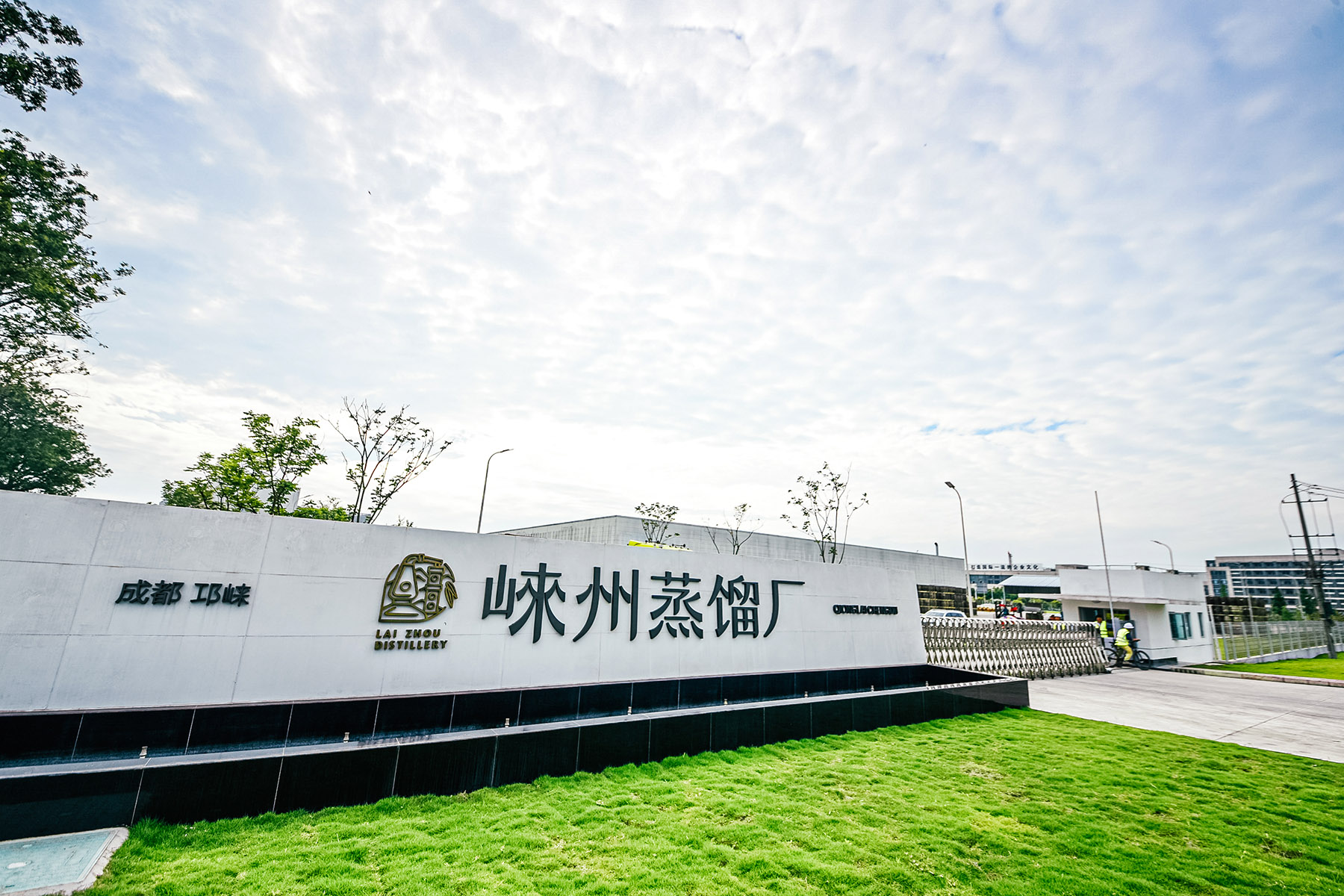
In the eastern outskirts of Anshun, Guizhou province, where mist clings to the lush hillsides and the scent of damp earth hangs in the air, a rare microclimate is nurturing China's emerging whisky industry.
Resembling the climate conditions of Scotland's Highlands, the area is home to Panda Brew's whisky distillery, where nearly 2,000 casks of the liquid are laying the groundwork for China's next generation of whisky production.
The whisky, made from imported malted barley and distilled using self-developed equipment, is undergoing the maturation process.
Founder Xia Yulin, who had been immersed in the craft brewing industry since 2013, began pivoting toward whisky in 2016. Production at the Anshun distillery officially started in 2022. Whisky production is far more challenging than brewing beer, but the potential market is enormous, he said.
READ MORE: Deep structural adjustments foreseen in liquor industry
The brewer's optimism is well-founded, according to data from the 2023 China Whisky Industry Development Research Report released by the China Alcoholic Drinks Association. Whisky, first introduced to China in the 19th century as an exotic import, has surged in popularity over the past decade.
From 2013 to 2023, China's whisky market grew more than fourfold, reaching around 5.5 billion yuan ($756 million) in 2023 — a 10 percent increase from the previous year. The report predicts this surge will continue, signaling a growing consumer appetite for the spirit.
The report also reveals a key milestone: in 2023, China's whisky production capacity surpassed 50,000 kiloliters, soaring by 127 percent year-on-year and, and for the first time exceeding the nation's whisky imports.
This milestone signals a shift in the market, with domestic whisky gaining ground on international brands as new distilleries rapidly emerge.
Currently, nearly 100 whisky distilleries are operating across Yunnan, Guizhou, Sichuan, Shandong and Zhejiang provinces, and in other regions. Investment has driven both expansion and innovation, enhancing production standards and fostering international partnerships.
With whisky requiring a minimum three-year aging period, many of the distilleries founded in recent years are preparing to release their first major batches, signaling an imminent explosion of homegrown offerings.
While domestic brands still trail global giants in terms of name recognition and inventory maturity, they are sketching out their own bold flavor maps, distinct from imported legends. Leveraging innovative flavor profiles — such as Yunnan coffee bean infusions and notes inspired by China's signature baijiu aroma styles — Chinese whisky is injecting fresh vitality into the market, and is poised to capture the imagination of younger consumers.
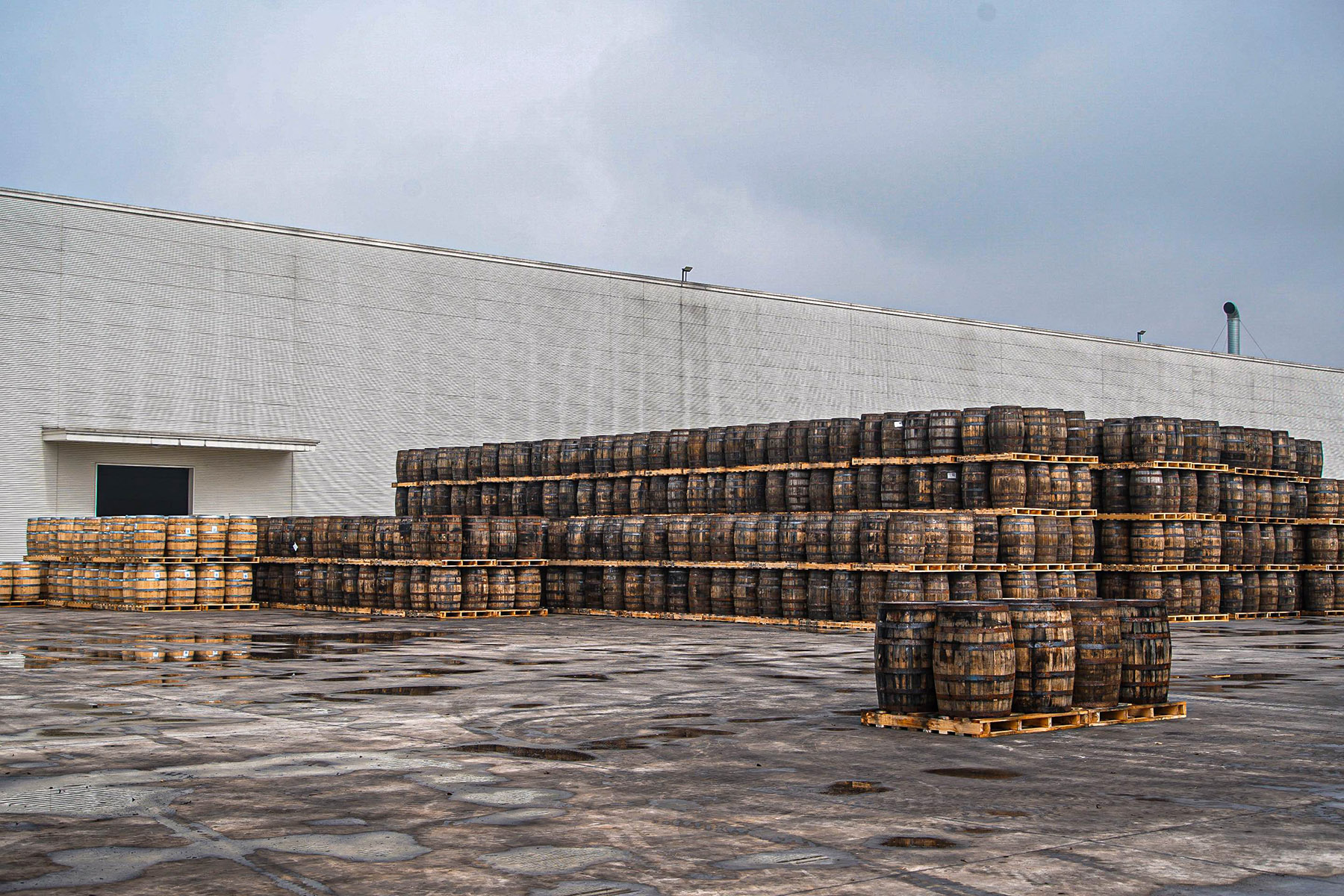
Leading distillery
Leading this revolution is Laizhou Distillery, deep in Sichuan's green hills. Owned by Shanghai Bacchus Liquor Co, it has emerged as a powerhouse in China's burgeoning whisky industry. Today, it accounts for roughly 80 percent of China's whisky production and oak barrel supply.
In 2016, Bacchus Liquor, which had long imported spirits for its cocktail business, realized the untapped potential in China's whisky production.
"China is a vast country with all the ingredients and climatic conditions necessary for whisky production," says Shen Anqi, the distillery's vice marketing director. "That realization sparked the idea to craft our own whisky."
Laizhou began operations in 2021, with production ramping up quickly. Located in the "30 degrees north latitude" distillation belt — a region renowned for its favorable brewing conditions — the distillery benefits from a unique combination of factors.
The area's basin climate, marked by warm winters and cool summers, creates ideal conditions for whisky maturation, with some studies showing the process is faster than in Scotland.
The location also has links with China's history of alcohol making. Qionglai, where the distillery is based, is known for its fine liquor. It was a key stop on the ancient Tea Horse Road and boasts over 2,000 years of distilling traditions. The region is also home to one of China's largest baijiu production bases, and many famous baijiu brands trace their roots to the area.
Laizhou Distillery now produces around 30,000 tons of whisky a year — enough to fill more than 40 Olympic-size swimming pools. According to Shen, the distillery houses over 400,000 oak barrels — a rarity in China, and a testament to the scale of its operations.
Laizhou even operates its own cooperage, still crafting barrels by hand, a meticulous process that cannot be fully automated. "Our team handcrafts each barrel, which adds a level of craftsmanship that's increasingly rare in the global whisky industry," Shen says.
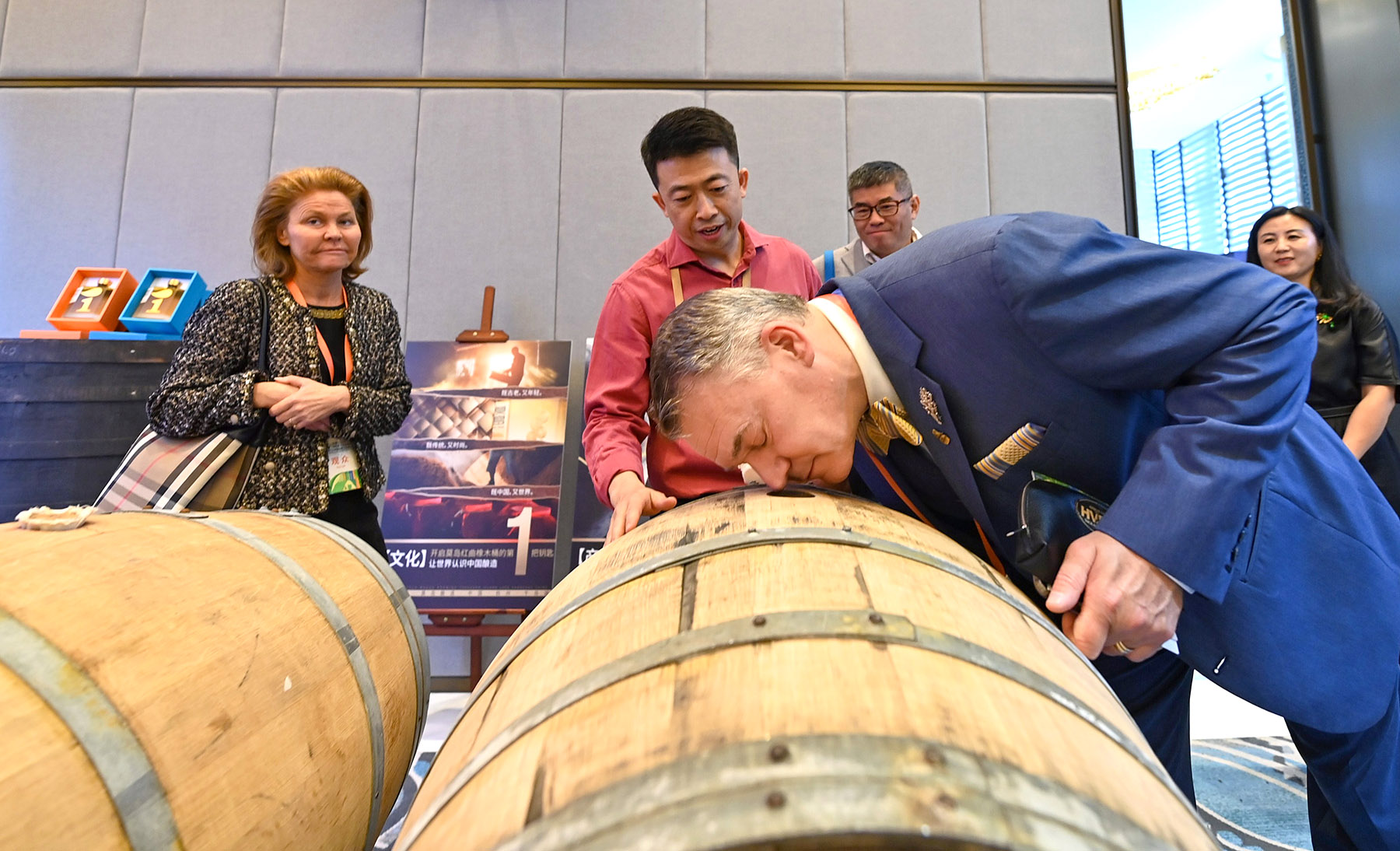
Roll out the barrels
Innovation is also at the heart of Laizhou's approach. Beyond traditional bourbon and sherry casks, the distillery has pioneered the use of Chinese oak barrels. One example is the yellow wine cask, first seasoned with yellow wine for 18 months, then used to age whisky, imparting subtle rice and fermentation aromas to the spirit.
Laizhou has also experimented with Mongolian oak casks, sourced from northern China's Greater and Lesser Khingan Mountains. "Mongolian oak meets European whisky standards," Shen explains. "It adds a unique depth to the whisky, something entirely new to the global market."
Though the distillery's focus is firmly on whisky, environmental sustainability remains a priority. Laizhou has incorporated various green initiatives, including recycling hot water for reuse and capturing carbon dioxide emissions for use in their cocktail products. "We even repurpose our spent grain as animal feed for nearby farms," Shen adds.
In March, Laizhou introduced a new product line aimed at younger, cost-conscious consumers. The 100-milliliter bottles, priced at about 30 yuan, offer an affordable entry point into the world of whisky, making the spirit more accessible to a broader audience.
"We wanted to create something that fits easily into a pocket and into the lifestyle of younger consumers," Shen says.
Laizhou Distillery's commitment to innovation and quality has earned international recognition. At the 2025 Icons of Whisky China Awards, the distillery's visitor experience won "Visitor Attraction of the Year", and went on to earn the prestigious title of "Global Highly Commended" at the IOW Global Awards.
Whisky writer Chen Xiao was deeply impressed after visiting Laizhou Distillery's visitor center, describing it as thoughtfully divided to ensure that brewing equipment and natural landscapes coexist harmoniously.
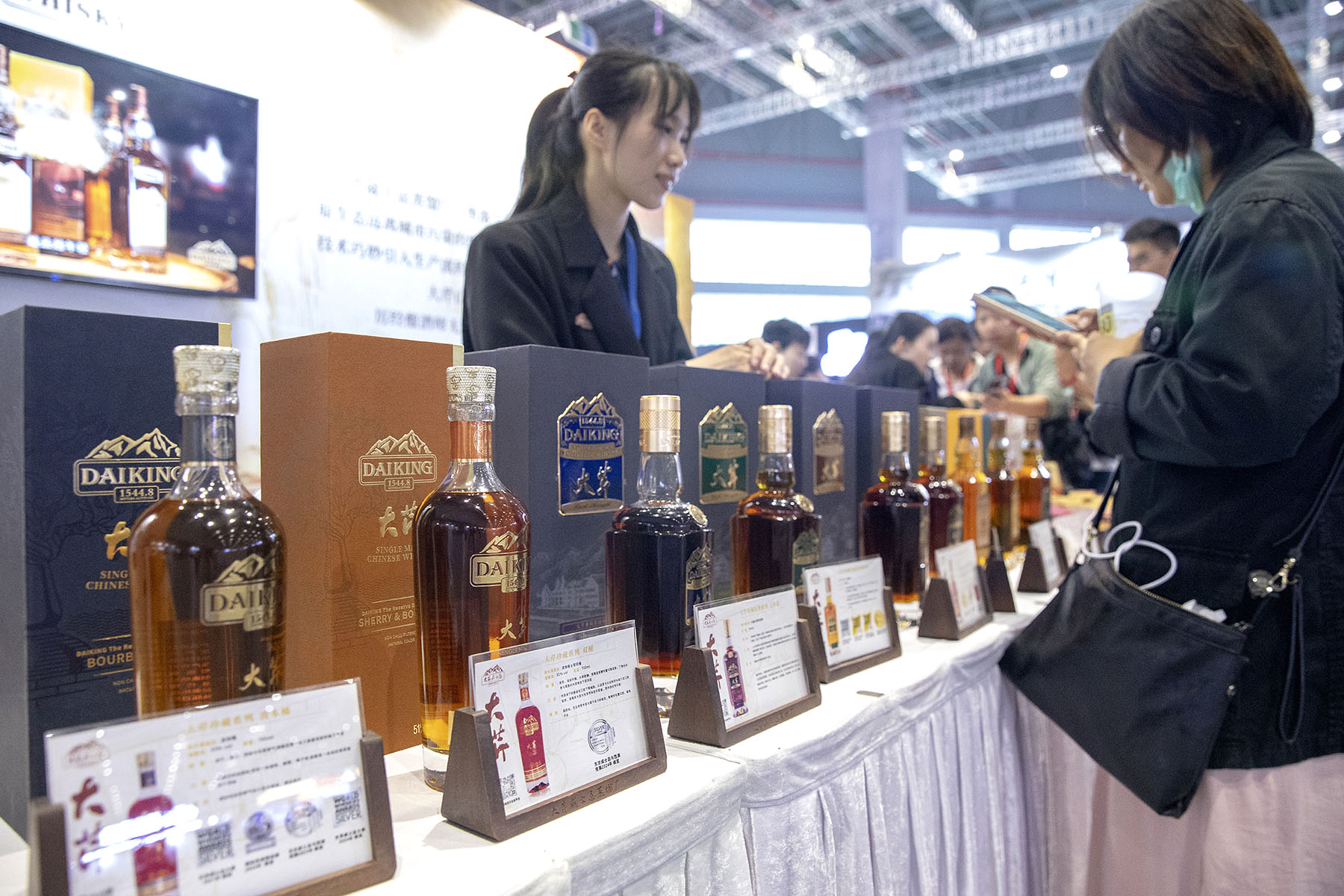
Chen, who launched a whisky-focused media platform a decade ago, has witnessed China's whisky scene evolve from almost nonexistent to a vibrant industry with around 100 distilleries.
Over the years, he has continuously updated his "China Whisky Map", personally visiting many of the country's emerging distilleries. Beyond large-scale operations like Laizhou, Chen has observed some domestic distilleries pursuing a boutique, high-end product path.
"Some Chinese whisky products are actually not cheaper than imported ones," Chen said. "That's because many local distilleries have recently made heavy investments in building infrastructure, and some even import raw materials, leading to higher production costs."
Drawing parallels with Japan, Chen noted that Japanese whisky initially started by mimicking Scotch whisky, both in technique and flavor, before developing its own distinctive style over time.
"China's whisky industry is still in its early stages," he said. "It will take years before a unique Chinese whisky character emerges. But I believe we might evolve faster than Japan did — because Chinese producers are already showing boldness in innovation and have entered the market at a favorable time."
Modern technology is helping to accelerate this progress, Chen added. "With today's internet access and the rise of AI, it's much easier to learn distillation techniques. Even when purchasing equipment like stills, technical support often includes on-site training. This greatly speeds up development in China," he said.
Chen predicts that in the next five to 10 years, China's whisky market will see a variety of new offerings as distilleries' casks mature.
He is also confident about the increasing enthusiasm among domestic consumers for whisky. "I used to think whisky was only for older, successful professionals," he said. "But I've realized it's equally suited to young people — especially those with some disposable income and a growing interest in lifestyle pursuits."
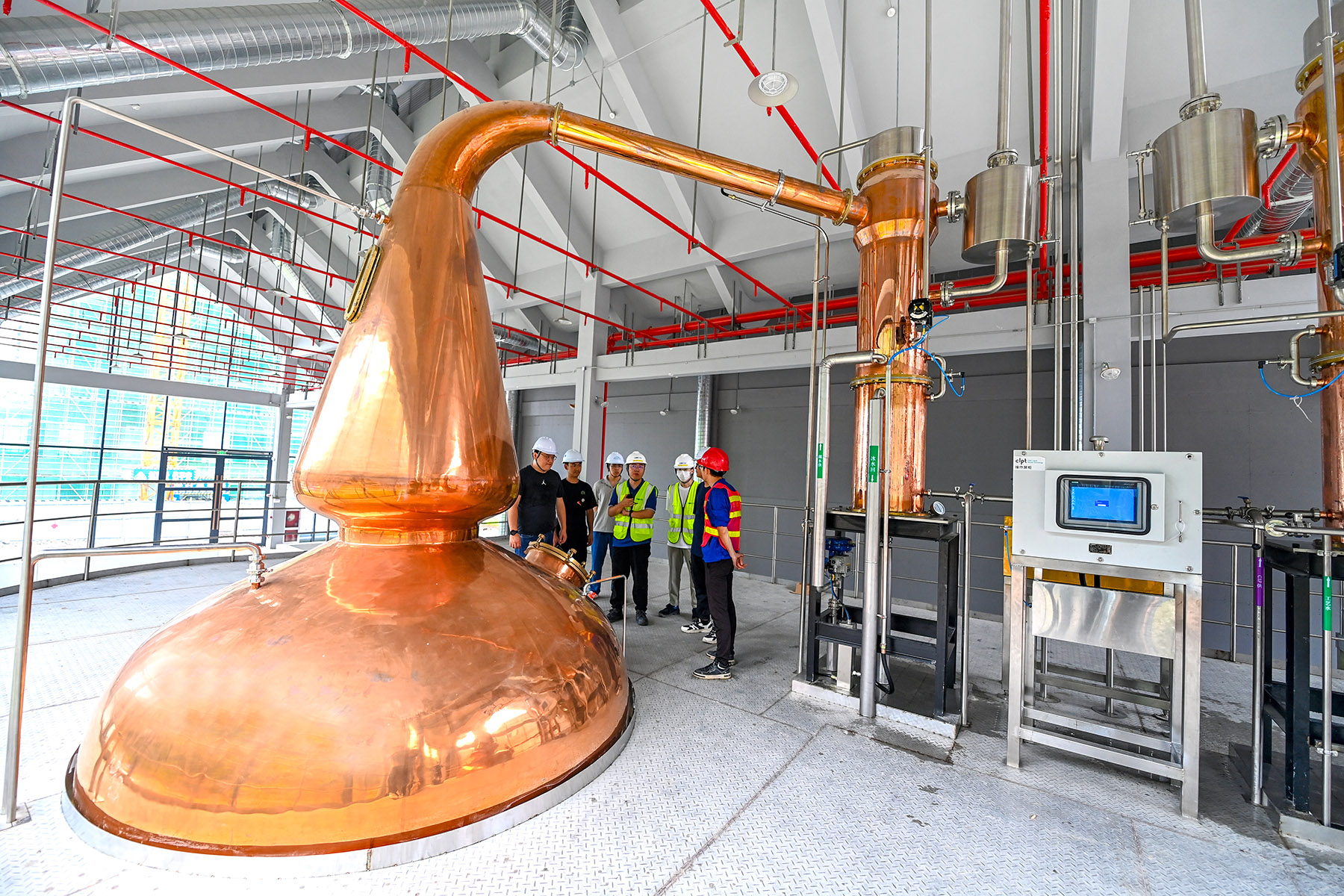
Improving standards
At the Grand Hyatt Beijing, sommelier Zhang Haomeng oversees a whisky list that includes two domestic brands — Daiking from Fujian province and Kavalan from Taiwan.
Although the menu offers about a dozen options from countries like Scotland, the United States, and Japan, Zhang noted that so far, guests rarely request to try Chinese whiskies.
"There's still a gap in brand recognition and acceptance compared with the major international labels," he said. "Guests usually prefer famous names like Macallan or Yamazaki."
While he has been watching the boom in Chinese whisky production with interest, he remains cautious about the quality of products that have not yet reached the market.
Zhang sees advantages for domestic whiskies, particularly in lower logistics and bottling costs compared with imports. However, he also acknowledges that Chinese brands still trail international competitors in terms of mature production systems and brand influence.
To build a stronger presence, Zhang believes domestic producers must prioritize product quality and consistency.
He also emphasized the importance of education: sommeliers and hospitality professionals should learn more about Chinese whiskies and share their stories with guests to foster greater consumer confidence.
As China's whisky industry matures, government regulators are stepping in to ensure quality keeps pace with growth. New national standards, set to take effect in 2026, could redefine what it means to be a "Chinese whisky" — for both producers and consumers.
The country first introduced national whisky standards in 1989, followed by updates in 2000 and 2008. The current version, in place since 2009, has struggled to keep pace with the rapid expansion of China's whisky industry.
The forthcoming new standards are intended to support the sector's ongoing transformation.
ALSO READ: Report: China drives strong recovery in Australian wine exports
Key changes include new rules to expand the classification system for whisky, and defining categories such as malt whisky, grain whisky, blended whisky, and flavored whisky. They also introduce clearer definitions for concepts like "new make spirit", the clear distillate that comes off the still during the initial stages of whisky production, "age statement", and strengthen the focus on quality indicators and testing methods.
Production and labeling requirements have also been tightened. Single malt whisky must be aged in oak barrels for at least three years, and grain whisky must undergo barrel maturation as well. Producers are also encouraged to indicate the age of the spirit to help consumers make better-informed choices.
The new standards stress that whisky must be made from grain and produced through saccharification, fermentation, distillation, and maturation, with blending being optional. Single malt whisky must age for at least three years without the use of exogenous enzymes, neutral alcohols, or non-caramel coloring agents.
Yuan Yue, secretary-general of the Whisky Committee at the China Alcoholic Drinks Association, said that whisky quality hinges on every step of production, from raw material selection to distillation, aging, and blending.
If any link is missing, she warned, the spirit would lose its defining character.
Yuan described the 2025 standards not just as a technical update but as a sign of the government's growing attention to the industry's development. She believes the new rules will help domestic whisky brands grow stronger, ensure fairer competition with imports, and offer greater protection to consumers.
liyingxue@chinadaily.com.cn


